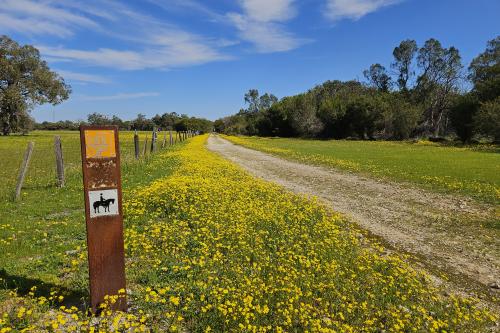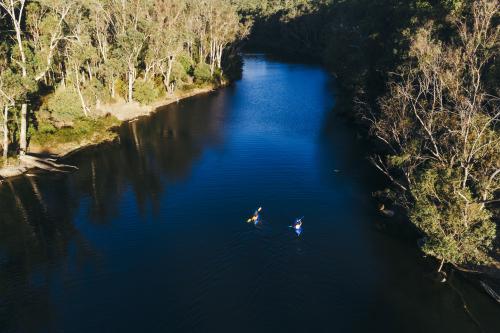Horse riding is an amazing way to connect with nature. Whether you’re in the saddle, leading a horse or being pulled along in a horse drawn carriage, horse riding is an unforgettable experience.
Horse riding is part of Australia’s cultural heritage and is an incredible way to explore and appreciate our stunning landscapes.
Where you can ride
On lands managed by Parks and Wildlife Service, horse riding activities are welcome in designated areas where the impacts are considered manageable. Riding is permitted on designated horse trails which can be found on Trails WA. For riding in other areas, please contact the local Parks and Wildlife Office.
Trail classifications
To help you choose the right trail, we have classified horse trails using a Horse Trail Classification System. This system is tailored to horse trail experiences in Western Australia and is similar to those used for hiking and mountain biking trails. Always check the classification before heading out.
Protecting Natural Areas
Horse riding in natural areas always carries some risk of overuse and disturbance. To help preserve these beautiful places, reduce your impact and stay safe.
- Avoid riding in sensitive environments. Your local Parks and Wildlife Office can provide advice.
- Always stay on the trail.
- Camp only in designated campgrounds.
Horse trails and other areas are monitored for signs of impact, such as weeds and trampling. If impacts become too great, and there are no other practical management solutions, areas may be temporarily or permanently closed or relocated. Where possible, relevant user groups will be consulted before making these decisions.
Tour operators provide safe and enjoyable tours at many locations in Western Australia. Tours are great if it’s your first time riding, but also for experienced riders visiting and wanting to learn about new locations.
Where to camp
Shannon Horse Camp in Shannon National Park has three horse trails and a place for you to camp with your horse. The three trails require a moderate level of skill and fitness. Facilities at Shannon Horse Camp include a large, fenced area, yards, hitching rails, water taps, compost bays and plenty of room to camp near your horse.
Bookings are essential and park entry fees and camping fees apply.
The Collie to Darkan Rail Trail is the second longest rail trail in the state (61.5km), encompassing peaceful native bush and picturesque farmland. Over the two-day journey, riders can utilise the Bowelling Station as their main overnight stop, and the disused Pony Club Grounds in Darkan. If staying in Darkan, for a small fee riders can use the shower and toilets in the caravan park next door. Please note rail siding sites can also be utilised as an overnight destination if required
Stay safe
Some parks are remote and have challenging terrain for even the most experienced riders so ensure you are prepared. Read these tips on horse riding safety in WA’s parks.
Join a club
A number of WA clubs offer a range of rides with experienced leaders as well as education programs.
Find out more ATHRA, HorsePower, Australian Carriage Driving Society, WA Horse Council and Equestrian Western Australia.


